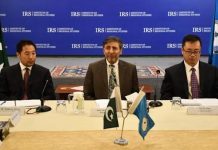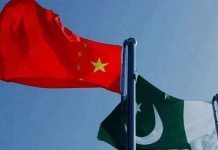By He Yin, People’s Daily
Chinese President Xi Jinping delivered a written speech at the Asia-Pacific Economic Cooperation (APEC) CEO Summit in San Francisco on Nov. 16. He reviewed the remarkable journey of Asia-Pacific cooperation, summarized the historical experience of Asia-Pacific development, and answered a new question of the times-where will Asia-Pacific cooperation be headed in the next 30 years.
Xi’s remarks mirrored China’s firm confidence in promoting high-quality economic development and bringing new impetus and opportunities to the world with China’s new development, charting the course and injecting momentum for the Asia Pacific region to rise up to the challenges of the times and write new chapters of cooperation.
APEC’s birth and growth followed the trend toward peace and development. Three decades ago, where humanity should be headed in the post-Cold War era was the question of the world, of history and of the times in front of Asia-Pacific leaders. In response, they convened the inaugural APEC Economic Leaders’ Meeting.
They agreed unanimously to rise above the outdated mentality of bloc confrontation and zero-sum game, deepen economic cooperation and integration in the region, and build a dynamic, harmonious and prosperous Asia-Pacific community.
This major decision enabled Asia-Pacific development and economic globalization to embark on a fast track of growth, turning the region into a powerhouse for world economic growth, an anchor of stability for global development, and a pacesetter for international cooperation.
The world has entered a new period of turbulence and change. The momentum of world economic growth is sluggish. Destabilizing, uncertain and unpredictable factors are increasing.
To find the direction of future Asia-Pacific cooperation, regional countries need to draw wisdom from history, stay true to their original aspiration, seize the opportunities, and ride the momentum.
With a deep understanding of the development trend in the Asia-Pacific region and the progress of the times, Xi summarized the profound insights brought by the remarkable journey of Asia-Pacific cooperation.
He stressed that openness and inclusiveness are the defining feature of Asia-Pacific cooperation, development for all is the overarching goal of Asia-Pacific cooperation, and seeking common ground while shelving differences is the best practice of Asia-Pacific cooperation.
Development in the Asia-Pacific region has been achieved not through provoking antagonism and confrontation, pursuing a beggar-thy-neighbor policy, or erecting high fences around a small yard, but by staying open and inclusive and drawing on each other’s strengths.
Development is an eternal pursuit of the region. Regional countries have stayed focused on development and continually deepened economic and technical cooperation, thus strengthening the ability of developing members to achieve self-development.
Over the past three decades, per capita income in the Asia-Pacific has more than quadrupled, and one billion people have been lifted out of poverty. This is an important contribution to human progress and global sustainable development.
Economies in the region have different histories and cultures and are in different stages of development. Forcing uniformity will not advance cooperation in the region; seeking common ground while shelving differences is the right way forward. This can enable regional countries to turn diversity in membership into momentum for cooperation and make collective progress through tapping into complementarity.
At present, the Asia-Pacific region is seeing both new opportunities for development as well as new challenges and risks.
Xi pointed out that regional countries should stay committed to APEC’s founding mission, never forget their mission bestowed by history, and move to relaunch Asia-Pacific cooperation.
Peace is an important prerequisite for development. The Asia-Pacific region cannot and should not be an arena for geopolitical rivalry, still less should it be plunged into a new cold war or camp-based confrontation. This is a common aspiration of all parties in the region.
The story of Asia-Pacific prosperity and development shows that development is only possible with cooperation, absence of cooperation is the biggest risk, and that decoupling and supply-chain disruption are not in anyone’s interests. To relaunch Asia-Pacific cooperation, it is important to remain committed to open regionalism and build an open Asia-Pacific economy featuring win-win cooperation.
Facing a new wave of scientific and technological revolution and industrial transformation, regional countries should move along with the trend to promote transition to digital, smart and green development. They should jointly boost innovation and market application of scientific and technological advances, and push forward full integration of digital and physical economies.
They should jointly improve global governance of science and technology, bolster support for green and digital transition and sustainable development through innovation, and build an open, fair, just and non-discriminatory environment for the development of science and technology.
China is a member of the Asia-Pacific family. The Chinese economy and the Asia-Pacific economy are interdependent and deeply integrated with each other.
China enjoys distinct strengths such as a socialist market economy in systemic terms, a supersize market in terms of demand, a full-fledged industrial system in terms of supply, and abundant, high-caliber labor forces and entrepreneurs in terms of human resources. China’s economic development is self-generative, resilient and has many potentials.
China has the confidence in, and even more capability of achieving long-term and stable growth, and through its development it will continue to provide the world with new growth momentum and opportunities. China is committed to applying the new development philosophy, and it unswervingly advances high-standard opening up, fosters a market-oriented, law-based and world-class business environment and pursues high-quality development.
China is now advancing the rejuvenation of the Chinese nation on all fronts by pursuing Chinese modernization, and the whole of more than 1.4 billion Chinese people will live better lives. For the world, this means a broader market and unprecedented cooperation opportunities. It will also instill strong impetus in the global modernization endeavor.
The APEC Putrajaya Vision explicitly lays out its vision for an Asia-Pacific community by 2040. Asia-Pacific countries should stay committed to APEC’s founding mission, never forget their mission bestowed by history, uphold openness, inclusiveness and common development, and seek common ground while shelving differences, to march toward the goal of building an Asia-Pacific community with a shared future.

















